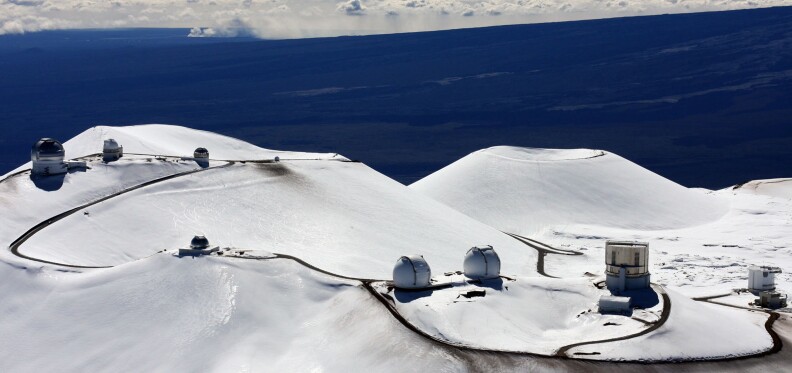Which need is more important: an indigenous culture’s access to a sacred site, or the ability of scientists to see right to the edge of the observable universe?
That’s the issue at the heart of the controversy on Hawaii’s Mauna Kea volcano, where construction of a $1.4 billion telescope is underway.
The issue was taken to the Hawaiian State Supreme Court on Thursday, where protestors are challenging the government’s right to permit development on land marked for conservation.
Known as the TMT, or Thirty Meter Telescope, it is one of the world’s most powerful telescopes, allowing researchers to gaze at galaxies 13 billion light years away.
But it’s become a lightning rod for many native Hawaiians, who believe the volcano is a sacred site, and that the government does not have the right to allow its construction.
The volcano already hosts 13 telescopes, reaching back to the 1960s, but the latest one has drawn the ire of activists, who have been protesting since the project broke ground.
Opponents of the Thirty Meter Telescope gather in prayer outside #Hawaii's Supreme Court building. #TMT #MaunaKea pic.twitter.com/9oSnw7CbTa
— Molly Solomon (@solomonout) August 27, 2015
After demonstrations at the site grew violent in April, the governor imposed emergency measures halting all construction.
Joining Take Two to discuss:
- of Hawaii Public Radio
Note: An earlier version of this post's headline said the TMT would be the world's largest telescope. The headline has been updated for clarification.



